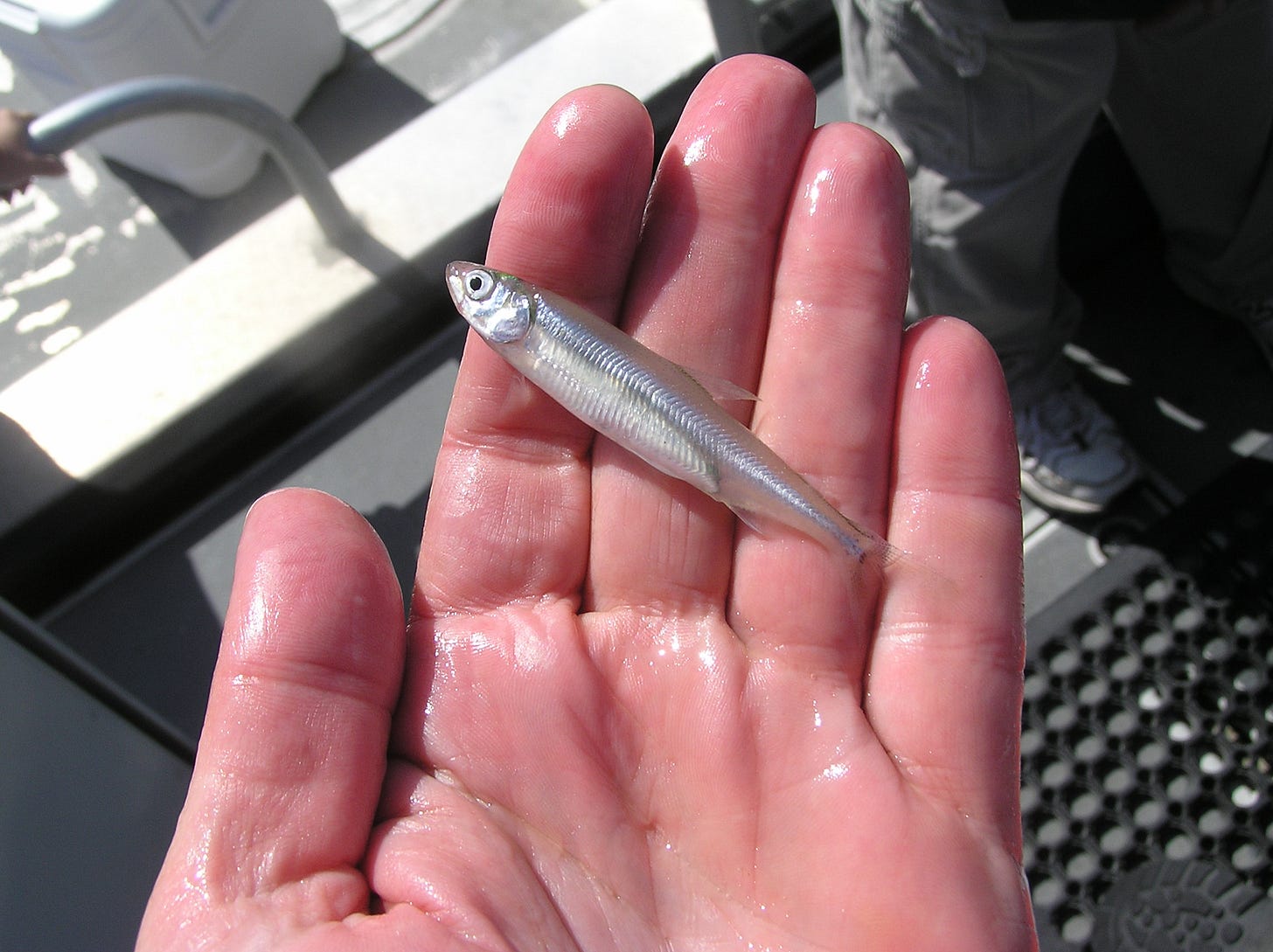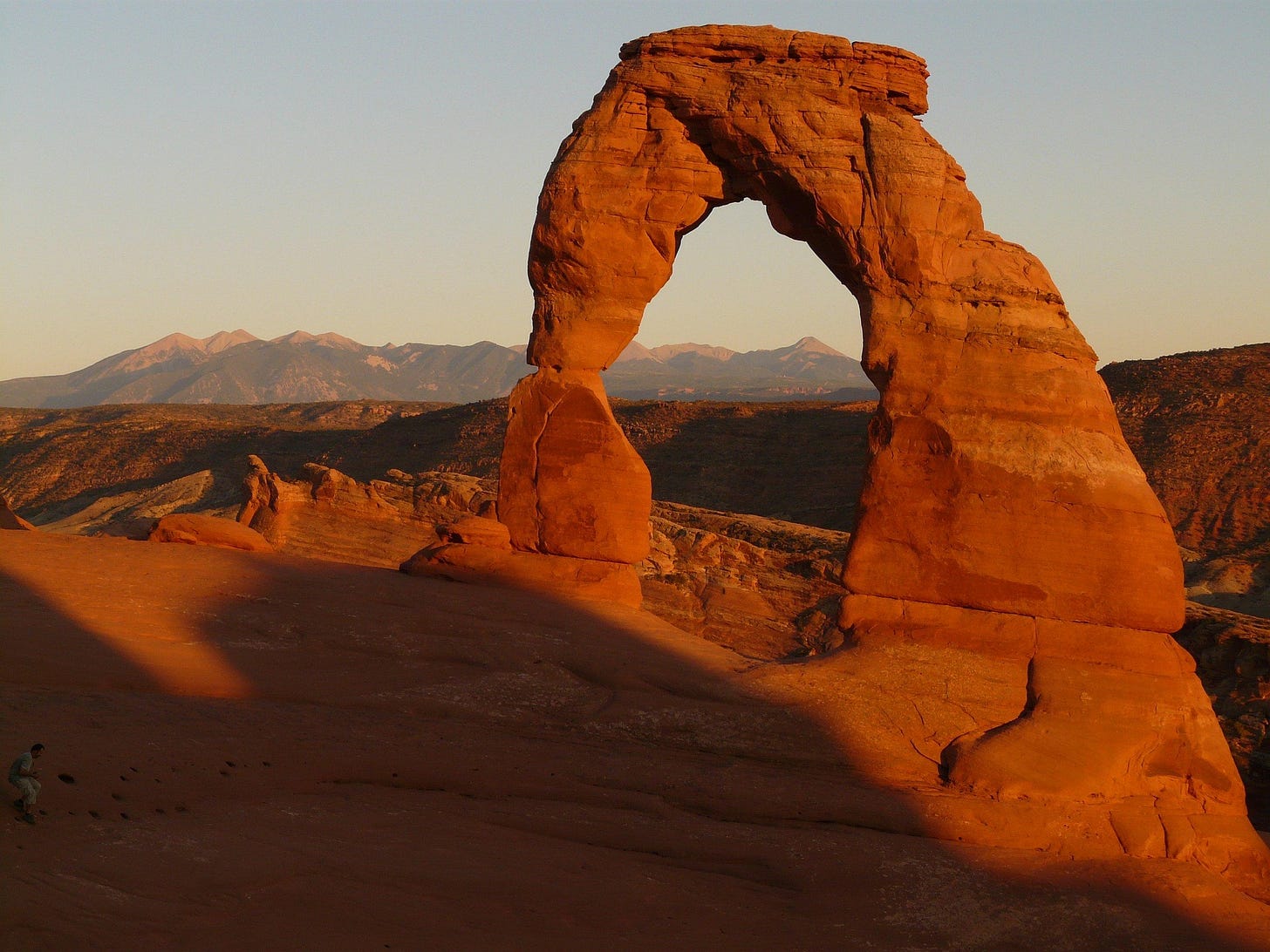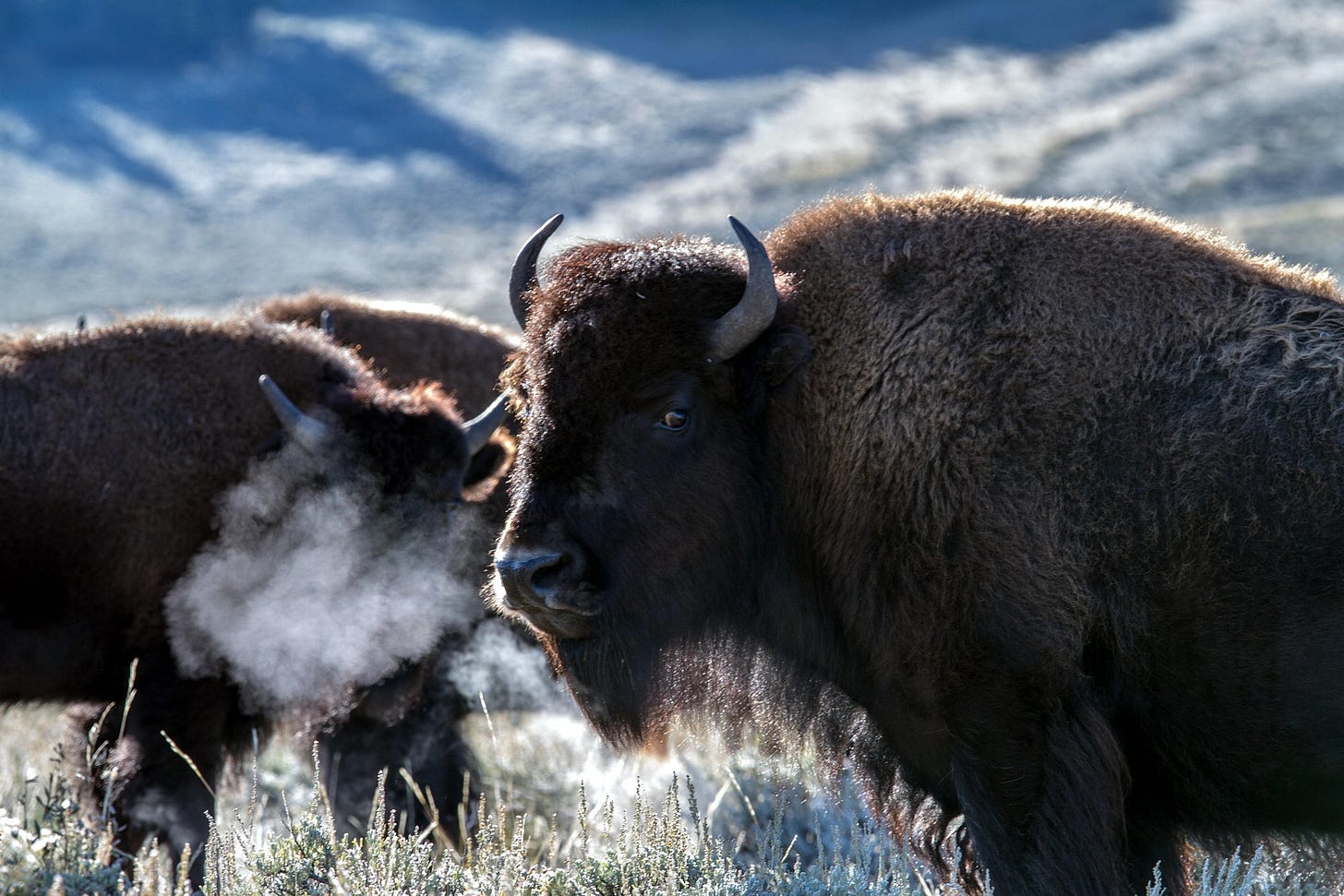Big Doings in the Interior
The stories and places I'll be looking at now -- centered on the Department of the Interior
What a wild four years the second Trump administration has been, huh? What’s that now? It’s only been a week? Ah.
If you’ve been paying even a little bit of attention to the news in the past week, you know there’s been some big stories out of Washington. Shortly after taking office, President Trump signed off on a firestorm of executive orders taking aim at everything from the country’s military to the country’s fish. Then, just this week, the administration froze vast categories of federal funding — until today, when that order was rescinded (who knows what might happen next). Amid all of this, if you somehow missed the fact that Dr. Phil accompanied an Immigration and Customs Enforcement raid here in Chicago, you’d be forgiven.
There’s a lot of uncertainty about what’s going to happen next, and I am sure that some other bit of news will break between the time I’m writing this and the time you read it. But beyond discovering what happens *next* — the world of breaking news — we’re also still yet to discover what this all *means.* Who has been impacted by these changes, and how? Tell me their story. How will communities and land and families change in response to what happens in Washington? Even though a lot of the Beltway press treats the goings-on between L’Enfant and Dupont as merely a game with winners and losers, politics affects the reality of life in America, and around the world. Lives lived by real people.
That’s also the goal I urge you to set for yourself. Instead of paying attention to the firehose of breaking news — who’s winning, who’s losing, who got fired, who said something stupid — focus on the stories that reveal the impact of these actions. A congressperson flubbing a TV interview doesn’t matter until that interview dooms a policy proposal that would affect someone’s life. Luckily, there are plenty of great reporters who will focus on those stories, on the stakes, the why, the “so what?” I’ll plan to share them when I come across them on my platforms, including this newsletter.
I’ll also try to write them as I can, sometimes for this newsletter and sometimes for other places. I kicked off the year with a look at some of Biden’s final public lands and conservation actions at Sierra, in a story where I made sure to explain what the policies meant and how they might fare moving forward. I also tried to keep it grounded in reality — the president’s actions on America’s lands and waters can change lives, both human and otherwise:
Even as the federal government changes hands this month, the country’s lands, waters, and wildlife will stay much the same—chuckwallas will be skittering across the Southern California deserts, halibut will be hiding among the sands of the Pacific coast, and grizzly bears will be waiting out the long, cold months in the northwestern forests.
The government’s only choice is to decide how, or whether, to keep it that way.
And when it comes to the work of our federal government, my focus is generally going to fall on the Department of the Interior, along with the Department of Agriculture. The reason is simple — these two agencies determine much of what happens with the country’s lands, waters, forests, mountains, wetlands, rivers and grasslands, as well as what happens to the wildlife and communities who live in and around those places. For those of you who aren’t familiar, Interior includes agencies like the US Fish and Wildlife Service, the National Parks Service, the Bureau of Land Management and the Bureau of Ocean Energy Management. Read about ‘em here — or check out some of my writing on what they do, like this piece from last year on the BLM. Agriculture, or USDA, has a whole bunch of agencies dealing with nearly every aspect of the country’s food system, as well as rural communities
As these agencies create and enforce policy — again, policy that has a tangible impact on people’s lives — I’ll try to collect and write stories on the impact of that policy here. But here’s where a bit of reality also comes up: I am but one freelance reporter, with a number of other commitments I rely on to make a living. There’s a fair number of people subscribed to this newsletter, but even if everyone subscribed here signed up to pay me monthly, that still wouldn’t be enough to live on. And paying work will always have to take precedence over work that doesn’t pay.
So here’s what I’m going to do — I’m going to keep this newsletter free, at least for now. If the subscriber base grows a bit, I will probably choose to turn on paid subscriptions but keep all the posts free to read, allowing people to subscribe simply to support the work I’m putting into it. If (and this is a big if) a lot more people subscribe, I might turn on some (a few, not all) paywalls for paid subscribers. But let’s burn that bridge when we get to it.
For now, if you want to support my work, the best thing you can do is share these posts — forward them to your friends and family, post them on social media, hell, print ‘em out and staple them to a telephone pole. The more people who subscribe to this newsletter, the more time I can justify spending on it.
So, with further ado, let’s get into what’s been going on inside our country.
First, as previously noted, President Trump has signed a number of executive orders, with many addressing the country’s lands and waters. The most esoteric has absolutely got to be the one called “Putting People over Fish: Stopping Radical Environmentalism to Provide Water to Southern California.” The order directs the secretaries of Commerce and Interior to move more water out of the Sacramento-San Joaquin delta in northern California and into other parts of the state, using the recent LA county wildfires as justification for why such an action is needed.
This move could endanger a small fish called the Delta smelt, which lives in the state and is already very threatened. For more background on that, read this great story by Benji Jones in Vox. But let me also point out that the executive order’s assertion that the “enormous water supply” of Northern California now “flows wastefully into the Pacific Ocean” is very strange — if this is the case, is any river that reaches the ocean wasting water? The whole Amazon, what a waste. The mighty Mississippi, with the Ohio and Missouri rivers too, all such a waste into the Gulf of Mexico. (Whoops, I meant the Gulf of… you know what, I’m not touching that.)

Other executive orders aimed to boost fossil fuel production. One, entitled “Unleashing American Energy” said it is now the “policy of the United States” to “encourage energy exploration and production on Federal lands and waters, including on the Outer Continental Shelf.” But another executive order temporarily rescinded all areas of the Outer Continental Shelf from future offshore wind development, and Jael Holzman, a reporter at Heatmap, has pointed out how the president’s first actions could hamper wind development all over the country.
In addition, in the waning days of his administration, former President Biden banned offshore oil and gas drilling from most of the country’s coastal waters — a move President Trump has tried to undo. But whether he can remains to be seen.
The new administration has also paused all renewable energy project leases on public lands. One of the major moves the BLM took during the Biden administration was an update to the Western Solar Plan, which detailed a new strategy for building solar farms on federal land. New solar developments could go a long way toward weaning the country off of planet-warming fossil fuels — but clearly, the renewable energy industry in America is now facing a seriously uncertain future.
Another executive order signed last week was titled “Unleasing Alaska’s Extraordinary Resource Potential,” which aims to increase fossil fuel production in the state, including in the famed Arctic National Wildlife Refuge, or ANWR. This site, which sits at the very top of the state, on the coast of the Arctic Ocean, has been a political flashpoint for decades. Which, I have to imagine, would probably feel very strange to think about if you were actually standing *in* the refuge — hard to imagine politics while surrounded by tundra, mountains, and winding rivers, where caribou make a yearly migration and the very idea of time feels less like a ticking clock and more like the blinding relentlessness of 24-hour sunlight. If you ever want to read something mind-bending, check out Being Caribou by Karsten Heuer, a true account of a trek to follow the caribou on that migration. The trip was also made into a documentary:
In the waning days of the Biden administration, the Fish and Wildlife Service decided to keep grizzly bears protected under the Endangered Species Act, a decision I touched on in my recent piece on Biden’s final actions, and which Lindsey Botts at Sierra has covered more extensively. Basically, some states had asked the agency to remove protections for the bears citing, in part, the bears’ recovery around Yellowstone and Glacier National Park. The agency decided not to do that, noting that the species still hasn’t recovered in other parts of the northwest.
USFWS was planning to hold meetings to discuss this decision, but Montana Public Radio reports that those meetings have now been canceled as the new administration reviews the grizzly decision. What’s next? TBD.
In other endangered species news, Catrin Einhorn at The New York Times reports on whether Trump could convene the “God Squad” to challenge endangered species protections. I encourage you to read her story.
That’s far from everything that has happened to America’s lands and wildlife recently despite the fact that, as noted earlier, it’s only been a week since the new administration took office.
Some weeks are bound to have more stories, and some less. I’ll be watching. I hope you will too.






